By: Edwin Sarmiento | Updated: 2017-07-05 | Comments | Related: 1 | 2 | > Clustering
Problem
In a previous tip on Implementing Database Mirroring in SQL Server 2005 across domains, we have seen how we can configure Database Mirroring to achieve local high availability for SQL Server databases that are not joined to an Active Directory domain. We need to upgrade our SQL Server 2008 R2 databases before extended support ends. However, we do not have an Active Directory domain in our environment. How do we go about it?
Solution
To continue this series on Deploy a Windows Server 2016 Failover Cluster without Active Directory, we will look at building our Windows Server 2016 failover cluster (WSFC) without an Active Directory domain environment. In Part 1, you have learned how to prepare the servers that will become member servers/nodes of the WSFC – creating the administrative account, configuring the primary DNS suffix and DNS name resolution. This tip will walk you through the creation of the WSFC.
Creating the Windows Server 2016 Failover Cluster (WSFC)
Creation of the WSFC for servers that are not a part of an Active Directory domain is the same as when you have an Active Directory domain. Refer to this tip on Step-by-step Installation of SQL Server 2016 on a Windows Server 2016 Failover Cluster - Part 2 for more details. But because there are differences in the configuration, this tip will highlight what to expect when running the Failover Cluster Validation Wizard and the Create Cluster Wizard.
Running the Failover Cluster Validation Wizard
As in the previous tip, you need to specify the servers that you want to add as nodes in your WSFC and run the Failover Cluster Validation Wizard.
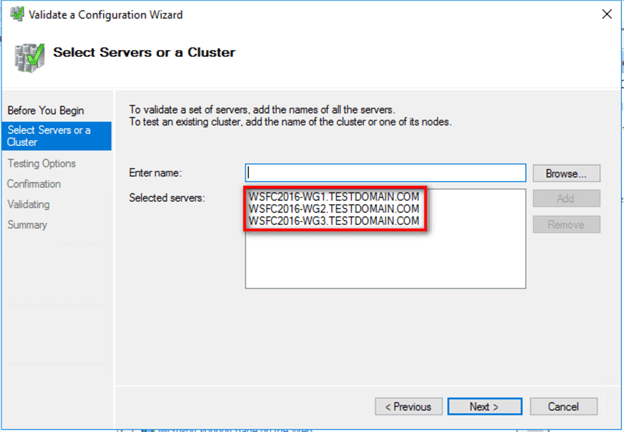
Running the Failover Cluster Validation Wizard will report a warning. This is expected.
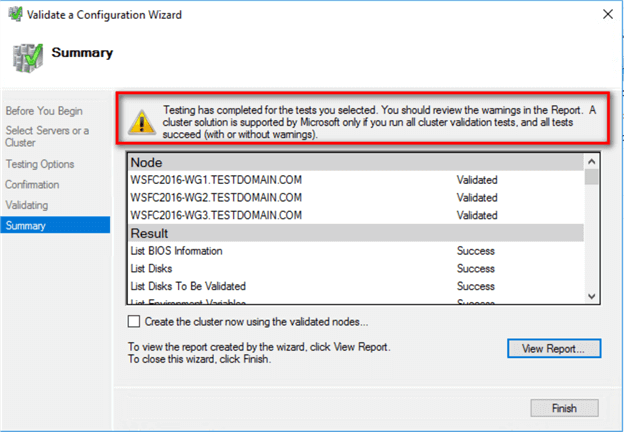
Review the Failover Cluster Validation Report. Notice the Storage and System Configuration sections.
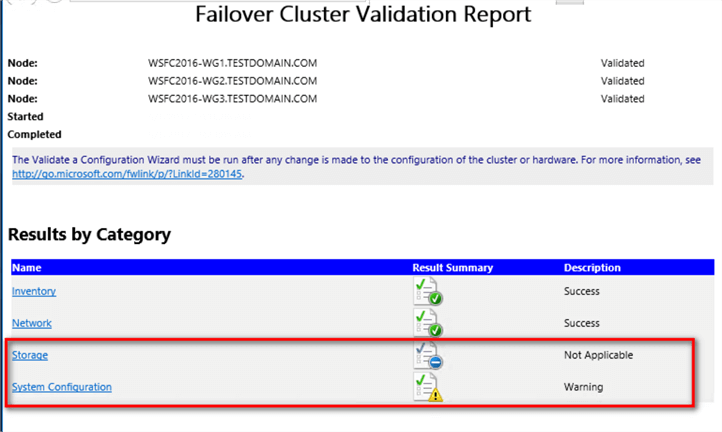
In the Storage section, because the servers do not use any form of shared storage – everything is local storage – most of the tests return as Not Applicable.
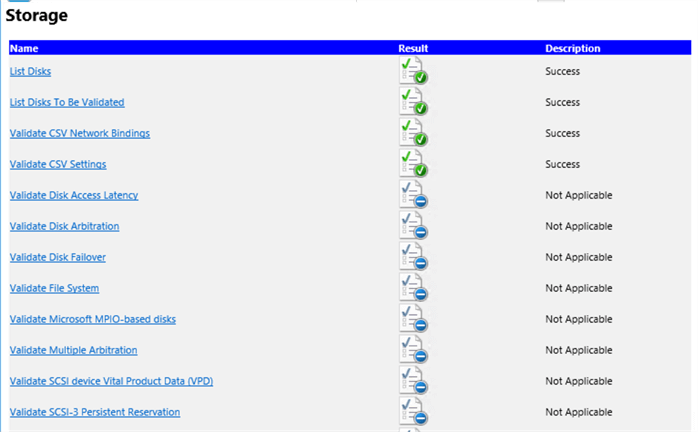
The System Configuration section also displays a warning. This is because there is no Active Directory domain.
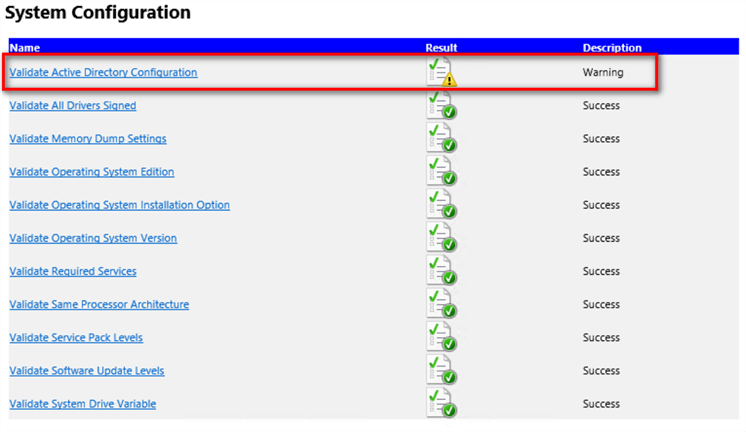
Clicking on the Validate Active Directory Configuration link shows the reason behind the warning message.
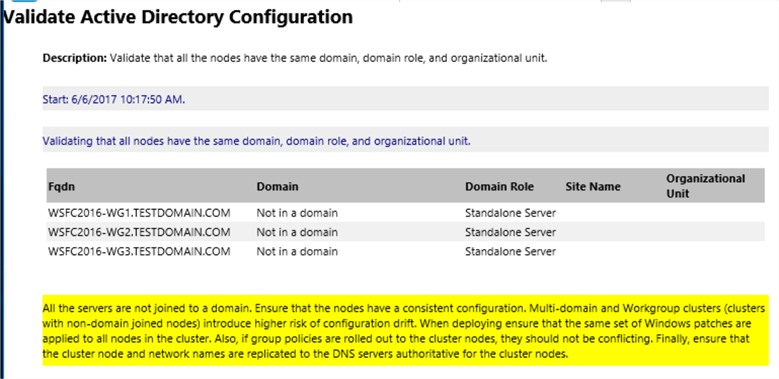
Creating the Failover Cluster
When you create the WSFC using the Create Cluster Wizard, specify the virtual server name and virtual IP address.
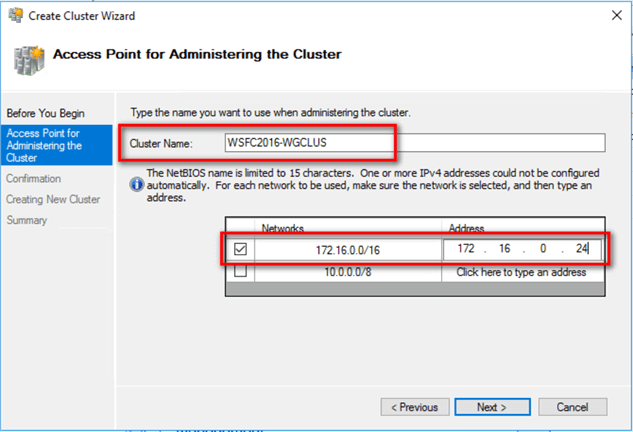
In the Confirmation dialog box, review the section on Cluster registration. Note that it only shows DNS only instead of DNS and Active Directory Domain Services. For comparison, refer to Step #4 of the section on Creating the Windows Server 2016 Failover Cluster in this tip.
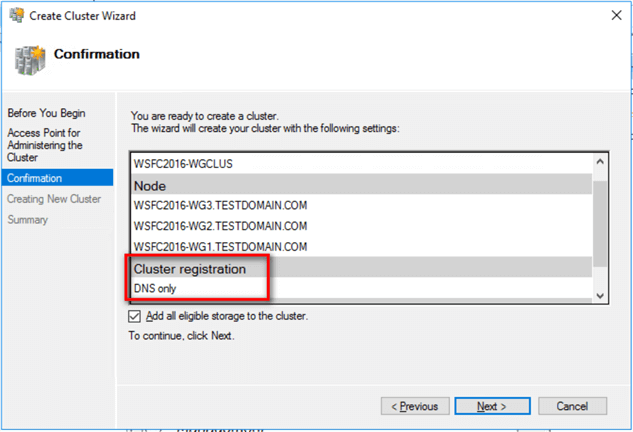
Review the Summary dialog box. Verify that all of the configuration settings are correct.

Since this WSFC contains three (3) member servers/nodes, node majority was selected as a quorum type.
Review the WSFC configuration using the Failover Cluster Manager console.
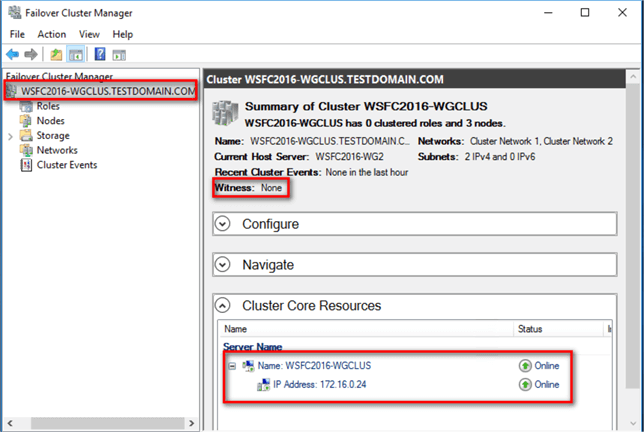
NOTE: Because the quorum type selected was node majority, no witness is configured.
Review the nodes of the WSFC under the Nodes section.
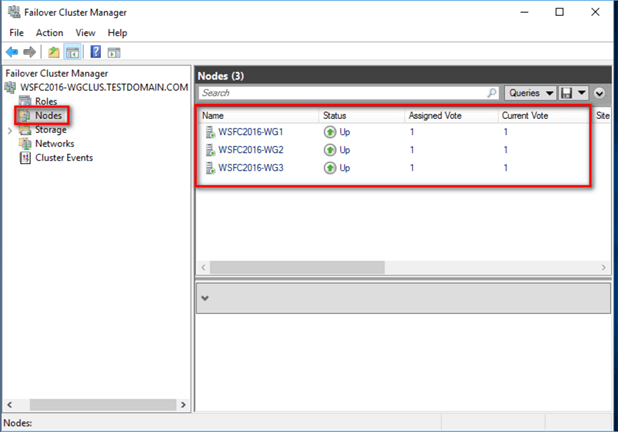
A Word About Quorum Configuration
Selection of quorum type during the creation of the WSFC is determined by
- The number of nodes: Node majority is selected if there is an odd or even number of nodes
- The existence of shared disks: Node and disk majority is selected if there are shared disks available
The WSFC will not choose the other quorum types – node and file share witness, no majority or cloud witness (in Windows Server 2016) – because they require additional configuration.
However, supported quorum types for a WSFC without an Active Directory domain only include
- Node majority
- Node and disk majority (using a disk witness)
- Node and cloud witness (using Azure blob storage as a witness)
Because there is not a centralized directory service like Active Directory for handling authentication, using a file share witness is not supported. This makes deploying SQL Server Availability Groups more expensive (licensing and managing an additional node or implementing a shared disk as a disk witness) and risky (allowing the WSFC to directly access the public internet for Azure blob storage). Be sure to consider these when deploying a WSFC without an Active Directory domain.
Once the WSFC is properly setup and configured, you can proceed to install and configure SQL Server Availability Group. Be sure to properly rename the cluster network resources as highlighted in this tip.
Next Steps
- Review the previous tips on Step-by-step Installation of SQL Server 2016 on a Windows Server 2016 Failover Cluster - Part 1, Part 2, Part 3 and Part 4
- Review the previous tip on Implementing Database Mirroring in SQL Server 2005 across domains
- Read more on the following topics
About the author
 Edwin M Sarmiento is a Microsoft SQL Server MVP and Microsoft Certified Master from Ottawa, Canada specializing in high availability, disaster recovery and system infrastructures.
Edwin M Sarmiento is a Microsoft SQL Server MVP and Microsoft Certified Master from Ottawa, Canada specializing in high availability, disaster recovery and system infrastructures.This author pledges the content of this article is based on professional experience and not AI generated.
View all my tips
Article Last Updated: 2017-07-05






